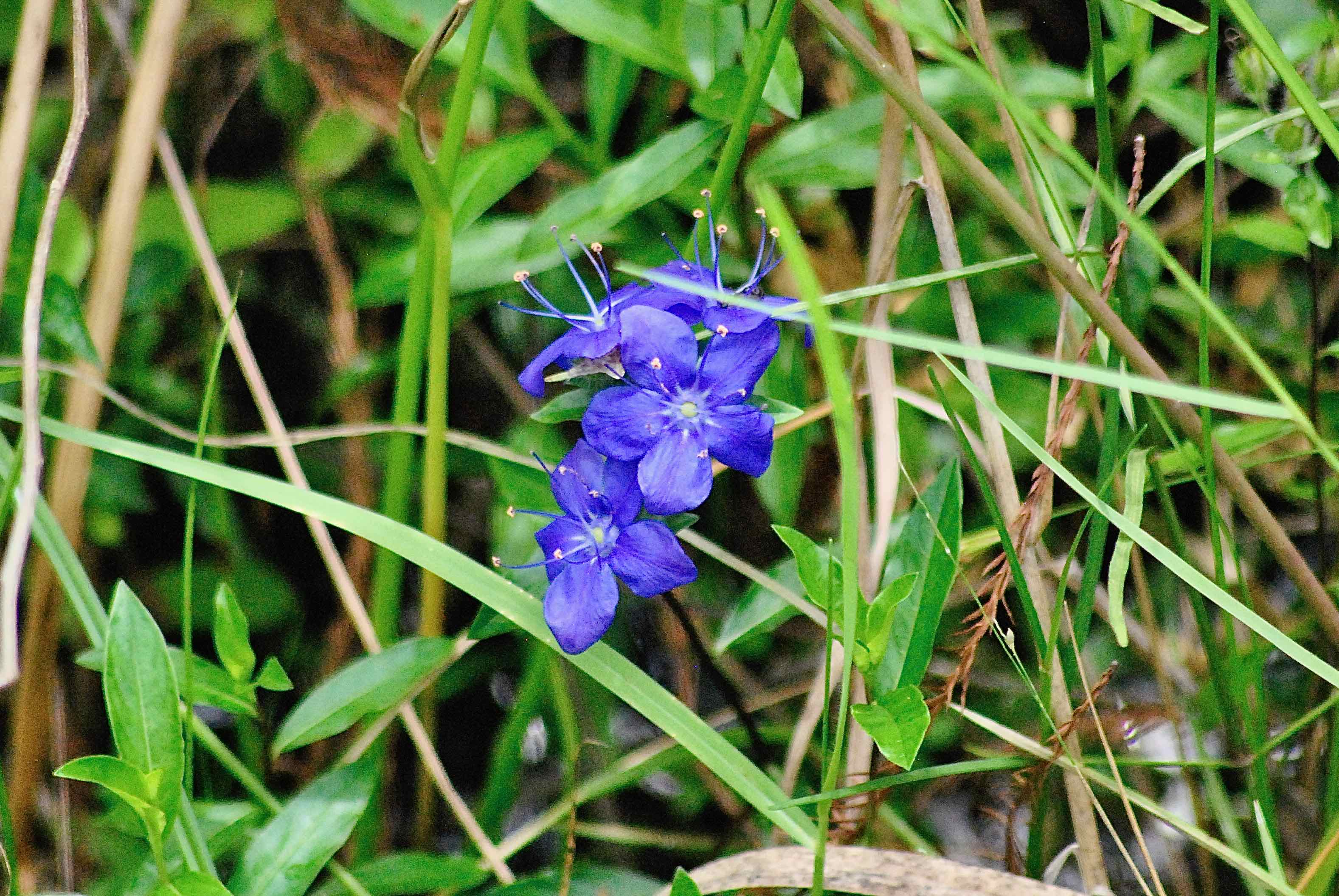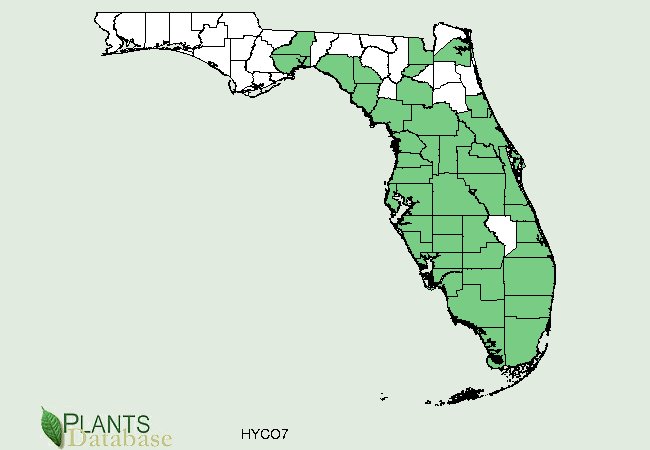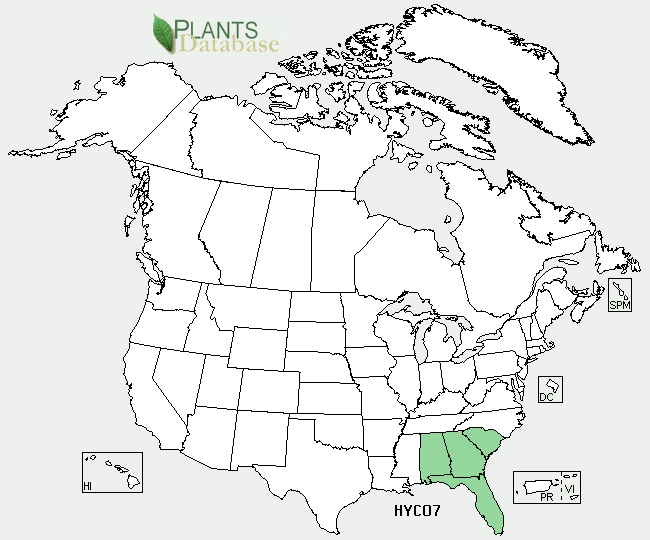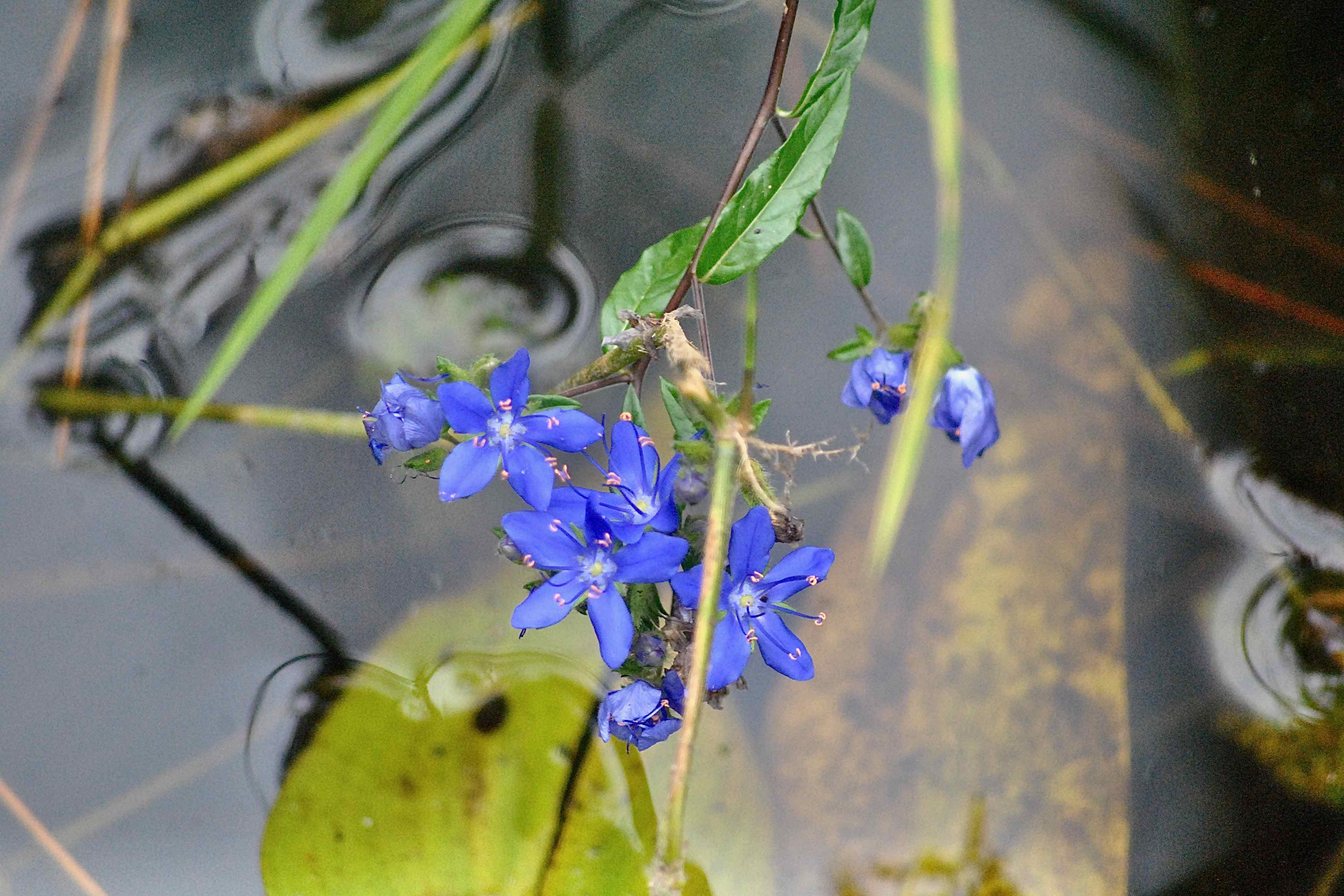
Skyflower, photographed at Dupuis Wildlife Management Area, Canal Point, Martin County, in September 2015.
We're not sure if the name of this flower refers to its color or the fact that it invariably points upward. Both work, and regardless, skyflower, Hydrolea corymbosa, is stunning. It has to rank among the most beautiful wild flowers found in Florida. Certainly among our favorites.
Skyflower is a Florida native, but not an exceedingly common one, particularly in the wilds of the southern end of the Sunshine State. It's occurs more frequently in other parts of the Peninsula and a few Panhandle counties. The U.S. Department of Agriculture also has skyflower ranging into parts of Alabama, Georgia and South Carolina, but it's less widespread in those states than it is in Florida.
Skyflower grows almost exclusively in wetlands, usually in standing water. It blooms in summer and fall (all photographs on this page were taken in September and October), and in clusters called corymbs (the source of its species name). It is a perennial, but dies back to the ground in winter, re-emerging in spring from underground stems called rhizomes.
Without the blooms, skyflower pretty much blends into the background. It can be shrubby, growing to about three feet tall, although the plants that we've seen were much closer to the ground. The leaves are lance-shaped — long and narrow — on mature plants, more round on younger plants. Leaves on both are covered with fine hairs. The flowers have both male and female parts, and produce a seed-filled capsule as its fruit.
Places we've seen it growing include Dupuis Wildlife and Environmental Area, Corkscrew Swamp Sanctuary, Grassy Waters Preserve and J.W. Corbett Wildlife Management Area in places that would be nearly inaccessible if not for the boardwalks that cut through the surrounding wetlands.
You'd think with its good looks, skyflower is would be a magnet for hungry bees, butterflies or even hummingbirds. It does require and attract insects for pollination, but it is not considered an important source of nectar at all. And it has no food, medicinal or utilitarian value for us humans.
Still, there are many who advocate its use as a cultivated plant for no other reason than those flowers. From what we've read, it isn't difficult to grow, assuming you've got the requisite wet soil in your garden. It can be started easily from seeds, cuttings or divisions, has moderate nutritional needs and will take full sun or part shade. As you might expect, it does not tolerate drought well at all. Finding sources of it can be the problem. Few nurseries offer skyflower. And public lands aren't an ideal source of seeds or plants, either, unless you're willing to run afoul of the law.
There are five members of the Hydrolea genus found in the United States, including skyflower, four of which are found in Florida. The others are not common and only one, spiny false fiddleleaf, Hydrolea spinosa, occurs in South Florida, but it isn't native to the region.
Skyflower is a member of Hydrophyllaceae, the waterleaf family. Other common names include sky flower, sky-flower, tall hydrolea and the extremely unpoetic bladderpod and bagpod. It deserves better than the last two.
Click on photo for larger image
U.S. Department of Agriculture Distribution Maps



Links for Skyflower



